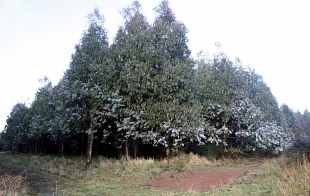Depth Study Module 1 – Scientific Models
Lesson Overview:
Resource overview
Models are being used in many areas of the forestry industry to improve outcomes in areas such as yield, environmental impacts, assessment of carbon capture and predicting continued sustainability in climate change conditions.
This three part series aims to highlight the importance of modeling in science and can be used to target the requirements of the NESA Depth Study.
Module 1 – explores teacher centered modeling of the outcomes of the Theory of Evidence for Plate Tectonics and also includes a case study on the use of modeling within the production of forestry materials. Included in the module, is a sequence of activities about models and also a scaffold for students to assess their understanding of theory comparing the strategies of learning via predominately text based data with that of their teacher’s use of models.
Module 2– targets the skills of students teaching using modeling based on the content outcomes of plate boundaries.
Module 3 – is based on the outcomes of gaining a knowledge and understanding of the causes of salinity and erosion and rehabilitation of these areas with a focus on forestry solutions and case studies.
Strand Content Descriptions:
- Develop and evaluate inquiry questions and hypotheses to identify a concept that can be investigated scientifically, involving primary and secondary data
- Select, construct and use appropriate representations (models), to communicate conceptual understanding
- Select and apply appropriate scientific notations, nomenclature and scientific language to communicate in a variety of contexts
- Construct evidence-based arguments and engage in peer feedback to evaluate an argument or conclusion
- Select qualitative and quantitative data and information and represent them using a range of formats, digital technologies and appropriate media
- Analyse evidence, including data and models, that supports the theory of plate tectonics, including but not limited to:
– the ‘jigsaw fit’ of the continental shelves
– matching up identical fossils on different continents
– the profile of the ocean floor (NESA)
– the age of sea floor rocks
– magnetic reversals in sea floor rocks
Year Level/s:
Key Curriculum Areas / Subject:
National Curriculum Codes:
Strand Content Description:
N/A
General Capabilities:
Cross Curriculum Priorities:
Curriculum Connections:
ScOT Catalogue Terms:
Theme/s:
Resource Type/s:
Primary:
Depth Study/InquirySecondary:
Online Learning
student Resource
Depth Study Module 1 - Scientific Models Student Workbook
This comprehensive student workbook is photocopiable and provides space for student answers to fulfil the learning outcomes of the Depth Study Module 1 - Scientific Models.
File Size: 1.02 MB
File Type: pdf
Loginteacher Resource
Teacher Guide - Depth Study Module 1: Scientific Models
This teacher resource outlines all activities, lesson times, equipment and other teacher preparation and sample answers to the student workbook questions. Diagrams, fact sheets and URL links are outlined.
File Size: 2.09 MB
File Type: pdf
Login